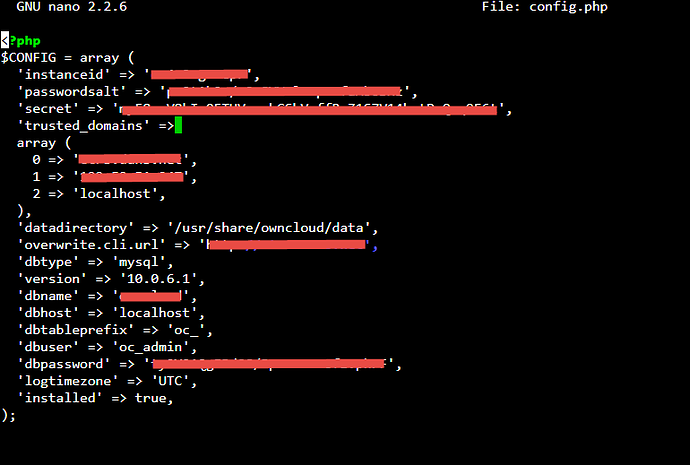

- #Bitnami owncloud trusted domain how to
- #Bitnami owncloud trusted domain software
- #Bitnami owncloud trusted domain code
I decided to just modify the PHP file directly, and only allow accessing from that host name.

Now that the ownCloud was live and well, I still needed to further configure secure access. Do restart the ownCloud stack after the change. I find that the Bitnami way to be much easier to work with.
#Bitnami owncloud trusted domain code
The ownCloud way is a bit kluncky as it requires code change. I have learned to make this adjustment before configuring any desktop clients. Since I only intend to run ownCloud alone on this VM, I would very much like it to run from the root path. This is intended for installing ownCloud on a shared web service. If the answer is no, you can manually start it by running the following script from the installation directory.īy default, the Bitnami installation runs ownCloud from the web URI of /owncloud.

I made sure to select both "Allow HTTP traffic" and "Allow HTTPS traffic". (There are commercial file sync solutions that address this issue by design, including SpiderOak and Wuala.)įirst, I created an Ubuntu image with in Google Compute Engine. With virtual machines (VM) available from IaaS providers, it is conceivable that one may be able to run ownCloud in a public cloud, so that a personal version of Dropbox can be had without dealing with concerns of security and privacy issues.
#Bitnami owncloud trusted domain software
Traditionally, ownCloud is a software package that is deployed on-premise. The first thing came to mind was ownCloud, an open-source alternative for document sync solutions such as Dropbox, Box, etc. To take a test drive on this favorite operating system of mine, I decided to deploy an application on the new operating system. You may not use this file except in compliance with the License.Google Cloud Platform recently announced the availability of Ubuntu images for Google Compute Engine. Licensed under the Apache License, Version 2.0 (the "License") If you have an issue related to one of our containers, please go to its specific repository in our GitHub organization and report an issue there. If you have an issue related to one of our charts, please go to the repository and report an issue there. You can have important information about a Cloud provider: There is an updated documentation at where you can find tutorials and FAQs. If the documentation didn't help you, we strongly suggest you to check the resolved issues and the on going ones before addressing an issue.
#Bitnami owncloud trusted domain how to
Popular applications, provided by Bitnami, ready to launch on:īefore continuing, please review our useful guides about how to configure and use your application in our documentation


 0 kommentar(er)
0 kommentar(er)
